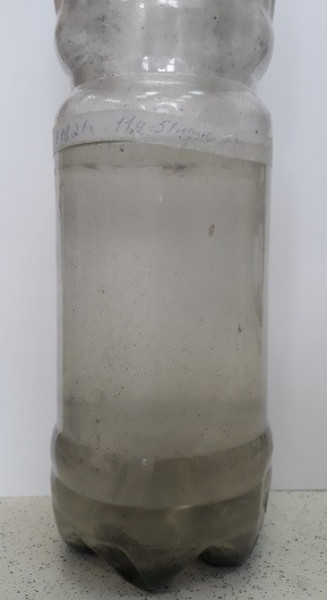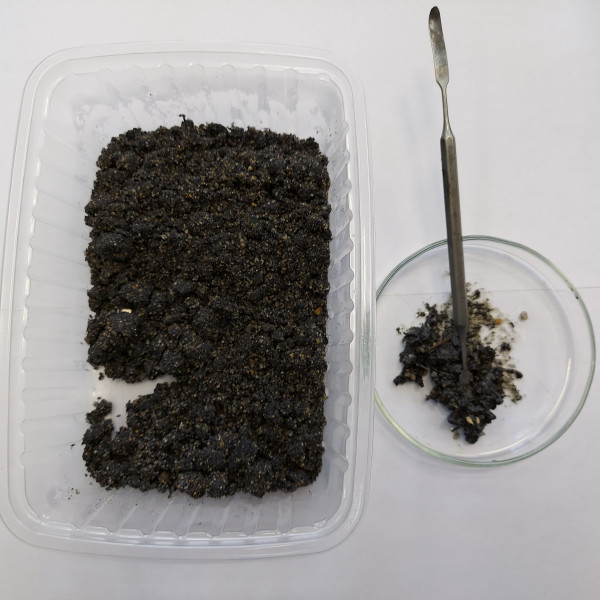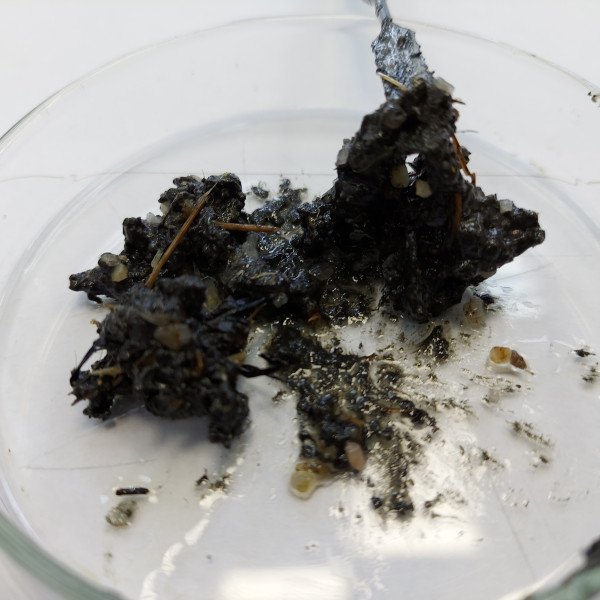Results of the analysis of the samples of water and soil from the coast of Olkhon Island for anthropogenic pollution
Following the requests from the Baikal Interregional Environmental Prosecutor's Office, State Duma deputy M.V. Shchapov and appeals of citizens, Limnological Institute SB RAS analysed water and poorly consolidated substance with mineral inclusions sampled from 6 to 10 August 2021 from the beach area of Olkhon Island on the coastline from Khuzhir beach to the beach in Peschanka Bay.
Poorly consolidated substances are dark grey with mineral inclusions. The morphological composition of mineral particles is similar to ash particles and grains of minerals (quartz, feldspars, mica, etc.) of silty-sandy dimensions. Water samples contained a small amount (solitary) of fragments of phyto- and zooplankton as well as plant pollen. The bulk of the particles is supposedly small pieces of ash, zooplankton remnants and particles of various suspended matter. No cyanobacterial bloom was found. The concentration of petroleum products in water samples (fluorimetric method) from the Khuzhir beach (0.012 mg/dm3) and Ulan-Khushin Bay (0.025 mg/dm3) was low, corresponding to the average concentration in Lake Baikal
Of greatest interest is the binder oily substance. The results of IR spectroscopy have revealed that the investigated samples cannot be natural or synthetic petroleum products. Thus, the bulk of this substance has structures typical of complex esters, whereas IR spectra of the samples are very close to vegetable oils (the basis of natural drying oil). Gas and liquid chromatography-mass spectrometry detection determined the presence of fatty carbonic acids in the concentrations extremely high for Lake Baikal, the composition of which, according to the requirements and standards of GOST 23239-89 “Fatty acids synthetic fractions C5-C6, C7-C9, C5-C9, C10-C13, C10-C16, and C17-C20”, corresponds to the С10-С16 fraction of synthetic fatty carbonic acids, a viscous buttery product. The concentration of fatty carbonic acids in the residue ranges from 107 to 116 mg/g dry weight of the sample with a moisture of 25%; in water – 16 mg/l. The wide spectrum of fatty acids in samples with alkyl chain lengths of 8 to 32 carbon atoms in the alkyl chain also indicates the synthetic origin of these fatty acids from petroleum feedstock. Moreover, the presence of glycidyl and glyceryl palmitate in the substance with fatty acids in the amounts typical of additives (2 to 5%) testifies to the technogenic nature of these fatty acids. Synthetic fatty carbonic acids are used for technical purposes, in the production of lubricants, plasticizers, surfactants, soaps, paints, and other synthetic products. Glycidyl is a synthetic organic substance containing epoxy and alcohol functional groups, owing to which it is widely used in industry for epoxidation and stabilization of oil and vinyl polymers. In waterproof paints, it is a homogenizing in gelling agent for spraying solid particles (for example, powder paints). Glyceryl palmitate serves as an emulsifier.
The level of indicator polychlorinated biphenyls (PCB) (seven main congeners) in the water is comparable to the concentrations detected in the pelagic zone of the lake during the expeditions around Lake Baikal in 2019 and 2020 and ranges from 0.25 to 0.32 ng/dm3. In the analysed substrates, PCBs have the same composition as in the water and are determined in trace amounts, which may exclude old transformer oils from the list of alleged sources of oil slicks
Therefore, the obtained data verified by various analytical methods lead to the conclusion that anthropogenic pollution of the water in Lake Baikal and of its coastal part for about 22 km took place in the water area of the Maloye More Strait near the Khuzhir settlement. Paint and varnish products were the most likely pollutants
Additionally, water samples were analysed for hygiene indicator microorganisms (SanPiN 1.2.3685-21 and MUK 1.2.3685-21). The study revealed an excess of indicators near Peschanka Bay (total coliforms – 1.5-fold, thermotolerant coliforms – 15-fold, and enterococci – 32-fold) and Ulan-Khushin Bay (thermotolerant coliforms – 3-fold and enterococci – 2.5-fold). This data indicates fresh faecal contamination of these bays of the Maloye More Strait.







